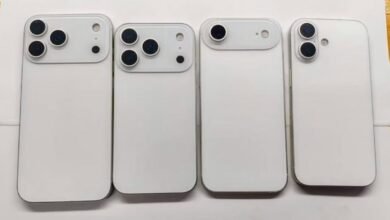Why Hoka Shoes Are Taking Over the Footwear Game: Comfort, Performance & Style Unleashed


Introduction: What’s the Hype Around Hoka Shoes?
Hoka shoes have quickly grown from being a niche favorite among ultra-runners to becoming a mainstream sensation. If you’ve been noticing those chunky, cloud-like sneakers on runners, walkers, and even fashion influencers, chances are they’re Hokas. What started out as a performance shoe brand known for extreme cushioning has now taken a solid spot in the athletic and lifestyle market. But what makes them so special?
hoka shoes The secret sauce behind Hoka’s rise is a simple but powerful mix—unmatched comfort, forward-thinking technology, and sleek designs. Whether you’re pounding the pavement for a marathon, chasing your morning coffee, or dealing with foot pain, there’s likely a Hoka model built just for you. The brand has managed to strike that golden balance between function and form, which isn’t easy in the footwear world.
hoka shoesIn this article, we’ll dive deep into the world of Hoka shoes—exploring their unique design, the best models for different activities, and why so many people are calling them the most comfortable shoes they’ve ever worn.
The History and Evolution of Hoka: From the Trails to the Streets
hoka shoes Hoka One One (pronounced “Ho-kah Oh-nay Oh-nay”) was founded in 2009 by two French trail runners—Jean-Luc Diard and Nicolas Mermoud. They wanted to design a shoe that made downhill running easier and more enjoyable. And they did just that—by creating oversized midsoles with enhanced cushioning that provided both comfort and performance.
hoka shoes What began as a niche solution for ultra-distance trail runners soon caught the attention of road runners and athletes of all levels. People who tried Hoka were blown away by how light yet cushioned the shoes felt. And that was just the beginning.
hoka shoes Over the years, the brand began to expand its lineup—introducing models specifically for walking, hiking, running, recovery, and everyday wear. Eventually, even healthcare workers, fitness enthusiasts, and people with joint pain began swearing by Hoka for their unmatched support and comfort.
The evolution from trail-exclusive to a lifestyle staple is no accident. It’s a result of constantly innovating without losing sight of what made Hoka special to begin with—comfort and cushioning.
The Design Philosophy: Why Hoka Shoes Feel Like Walking on Clouds
Let’s talk about what makes Hoka different from other footwear brands. The most obvious feature is the thick sole. But this isn’t just for show. Hoka uses a proprietary EVA foam that’s both ultra-light and incredibly responsive. This means you get excellent shock absorption without dragging heavy shoes around.
Another key design element is the Meta-Rocker technology. Imagine a rocking chair for your foot. This shape guides your stride and helps reduce fatigue, especially on long walks or runs. It encourages a smooth heel-to-toe transition that feels natural and effortless.
Then there’s the Active Foot Frame—a design that allows your foot to sit into the midsole rather than on top of it. This creates a bucket-seat-like effect for added stability, especially helpful if you’re dealing with overpronation or balance issues.
All these features come together to offer a foot-friendly experience that caters to a wide range of users. Whether you’re a seasoned athlete or someone who simply walks a lot for work, Hoka shoes offer a feel that’s hard to beat.
Best Hoka Shoes for Running, Walking, and More
With so many Hoka models available, it can be tough to figure out which one’s right for you. Let’s break it down based on different activities:
For Running:
- Hoka Clifton: This is the go-to daily trainer for many runners. It’s light, well-cushioned, and offers great support for short to long distances.
- Hoka Mach: Designed for speed workouts and tempo runs. It’s a little firmer than the Clifton but still super comfy.
- Hoka Bondi: The Cadillac of cushioned shoes. If max comfort is your top priority, the Bondi won’t disappoint.
For Walking & All-Day Wear:
- Hoka Arahi: Offers a balance of cushioning and stability. Great for people who overpronate or need extra support.
- Hoka Gaviota: Slightly heavier but more supportive than the Arahi. Ideal for heavier walkers or those with flat feet.
For Hiking:
- Hoka Speedgoat: Built for rugged trails with plenty of grip and durability.
- Hoka Anacapa: Combines hiking features with lifestyle looks—perfect for city explorers and weekend hikers alike.
No matter your activity level or foot type, Hoka likely has a shoe that will suit your needs without compromising on comfort.
Health Benefits: Why Podiatrists Love Hoka
One of the reasons Hoka has exploded in popularity is the positive feedback from the medical community—especially podiatrists. For people suffering from plantar fasciitis, bunions, arthritis, or general foot fatigue, these shoes can be game-changers.
The high stack height combined with rockered soles reduces impact on the joints. That means less stress on your knees, hips, and lower back. The cushioning is also beneficial for people who stand all day—like nurses, teachers, and warehouse workers.
Moreover, Hoka has multiple models available in wide and extra-wide widths, accommodating people with all foot shapes. This inclusive approach to design is a major win in the footwear world, where “one-size-fits-all” is too often the norm.
If you’ve ever dreaded putting your shoes on because of foot pain, giving Hoka a try might just be the best decision you’ll make for your feet.
Style Meets Performance: Hokas Aren’t Just for Athletes Anymore
It’s not just runners and walkers who are raving about Hokas. The fashion world has started to take notice too. Thanks to their chunky, “dad-shoe” aesthetic, many Hoka models have found their way onto runways, Instagram feeds, and even the wardrobes of celebrities.
Collaborations with designers and trendy colorways have made Hokas a streetwear staple. Whether you’re rocking joggers, leggings, or even jeans, they add a pop of boldness while keeping your feet happy. It’s rare to find a shoe that can handle a 10-mile run and still look good grabbing brunch afterward, but Hoka nails it.
This fashion crossover means you don’t have to sacrifice looks for comfort. Hokas let you do both—and that’s a huge part of their growing appeal.
Real User Experiences: Why People Keep Coming Back
Talk to any long-time Hoka user and you’ll likely hear the same thing: once you try them, you’re hooked. It’s not uncommon to hear stories of people who now own multiple pairs—one for running, one for walking, one for work, and another just because.
What really stands out in user reviews is the consistency in comfort. People often mention how switching to Hoka alleviated pain they didn’t even realize was being caused by bad footwear. For some, it’s even allowed them to return to physical activities they had given up due to chronic pain.
Whether you’re 25 and training for your first half marathon or 65 and dealing with aging joints, there’s a sense of relief and joy that comes from finally wearing shoes that don’t hurt. And that kind of loyalty speaks volumes.
Final Thoughts: Should You Buy Hoka Shoes?
If you’re someone who values comfort, support, and style, the answer is a big YES. Hoka shoes might look a little bulky at first glance, but once you slip them on, it all makes sense. They’re engineered to perform but built with your real-life needs in mind—whether that’s running a marathon or just getting through a long shift on your feet.
With so many models to choose from and such a strong reputation for quality, Hoka has solidified its place as more than just a runner’s shoe. It’s a lifestyle choice for people who want to treat their feet right.
hoka shoes So, whether you’re buying your first pair or thinking of expanding your Hoka collection, you’re definitely making a smart investment in comfort and health.



